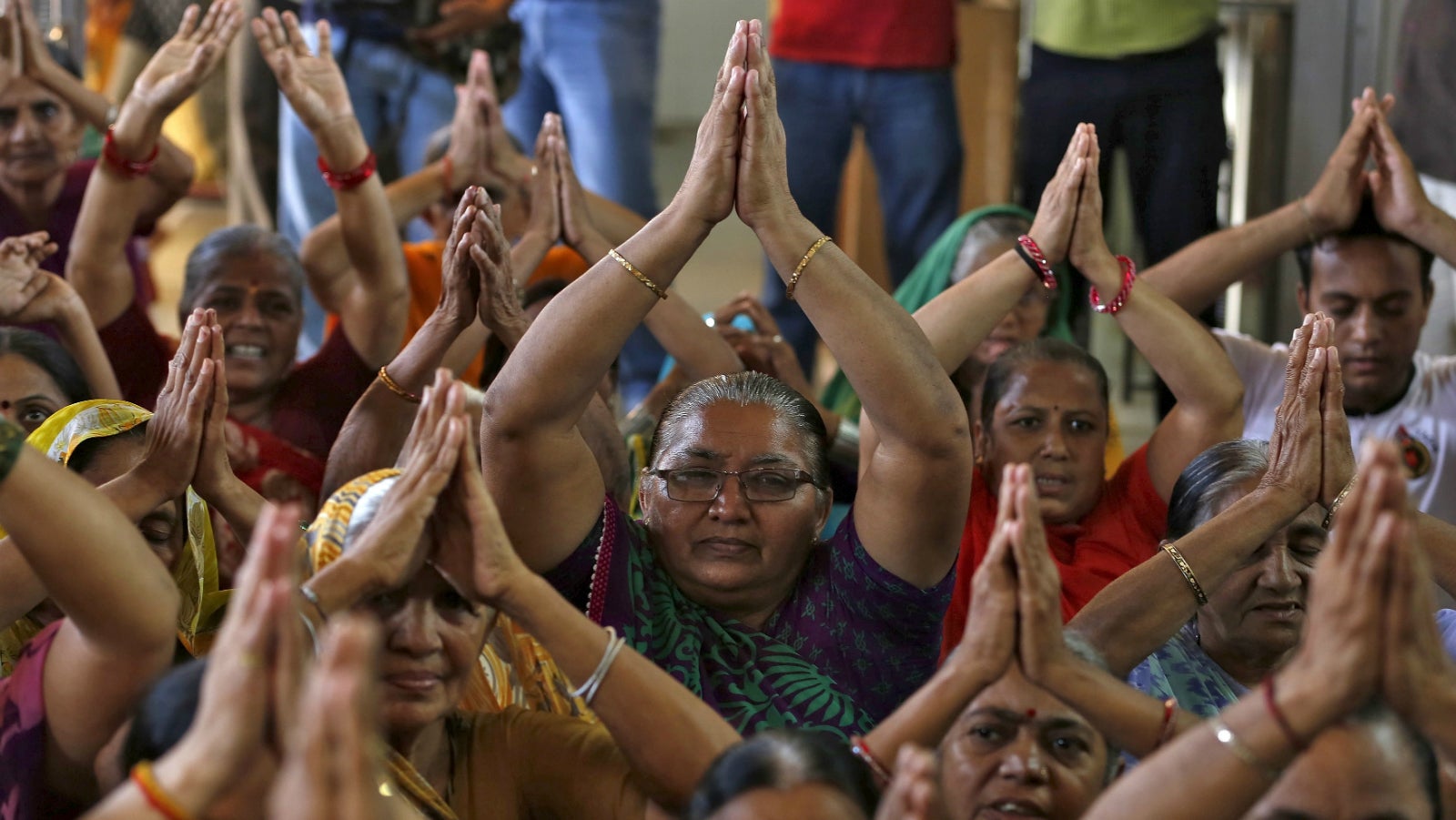The rising chorus from India’s women: You can’t bar us from our temples or shrines anymore
Under Indian law, all citizens are guaranteed the right to worship. Article 25 of the Indian Constitution promises every person the right to “freely profess, practice, and propagate religion.”


Under Indian law, all citizens are guaranteed the right to worship. Article 25 of the Indian Constitution promises every person the right to “freely profess, practice, and propagate religion.”
However, a handful of shrines—in the name of tradition, custom, or ritual purity—deny this civil right to women, in some cases preventing them from even entering the sanctuary.
Take, for instance, the 15th-century Haji Ali Dargah, located just off the Mumbai coast. Since 2012, the trustees of the dargah (an Islamic shrine built over a Muslim saint’s grave) have forbidden women from entering the shrine’s inner sanctum.
But India’s women won’t have any more of that.
On Jan. 28, several Muslim women activists protested with placards demanding entry, with another round of agitation planned for today (Jan. 29). While the restrictions were brought in recently at Haji Ali, at most other places of worship they are centuries old and part of deeply-held tradition.
This week, on India’s Republic Day (Jan. 26), around 1,000 women marched toward the Shani Shingnapur temple, located about 300 kilometers east of Mumbai, in the western Indian state of Maharashtra. Their plan: to forcefully enter the forbidden sanctum sanctorum. But local police broke up the march before it reached the temple. Many of the protestors—who included mostly housewives and students led by a women’s rights group, the Bhumata Ranragini Brigade—were detained.
According to a 400-year-old practice, only men may offer prayers at the temple’s inner sanctum. Until 2011, women weren’t even allowed inside the temple compound. The rule was partly relaxed after much campaigning.
A more successful campaign that same year led the Kolhapur’s Mahalaxmi temple in Maharashtra to do away with its exclusionary practices.
Some more recent efforts at reform have sought the involvement of India’s courts. In 2014, a Muslim women’s rights group filed a public interest litigation against the Haji Ali Dargah administration. The exclusion of women, the complainants say, is an act of discrimination that is not in keeping with Islamic practice, and is at variance with the other Muslim shrines in Mumbai that allow women’s entry.
The Bombay high court’s decision on the matter is awaited.
A problem with menstruating women
One case that could influence the Haji Ali Dargah decision involves a complaint brought before India’s supreme court regarding the exclusionary rules of the Sabarimala temple, in the southern Indian state of Kerala.
Nestled in the tropical forests of the Western Ghats, the temple is visited by millions of devotees, following 45 days of spartan discipline, mostly in the months between November and January.
As it stands, Sabarimala bars the entry of girls and women of menstruating age—between 10 and 50—as per the temple’s tradition. The reason often cited is that the reigning deity, Ayyappa, is a nitya brahmachari (chronic bachelor).
For centuries, Indian religious places have had a problem with menstruating women. And yet many shrines, despite feeling bound to tradition, have managed to update themselves in other ways, using modern technology for instance for reaching out to more people via the internet, soliciting donations online, and providing virtual tours for people afar.
The latest protests at Shani Shingnapur were sparked by a ritual purification of the temple after a woman unknowingly entered the inner sanctum in November 2015; the purification by local villagers enraged activists of the Bhumata Ranragini Brigade, who began organising the January protest.
In November 2015, a Sabarimala administrator crudely remarked that he would allow women into the shrine if there was a way to ascertain whether they were menstruating or not. The statement sparked the Happy to Bleed social media campaign, led by a student, to “protest against patriarchy and gender discriminatory practices prevalent in our society.”
Currently, the Bombay high court is waiting on the supreme court’s ruling on the Sabarimala temple case in order to pronounce its judgment on the Haji Ali Dargah case.